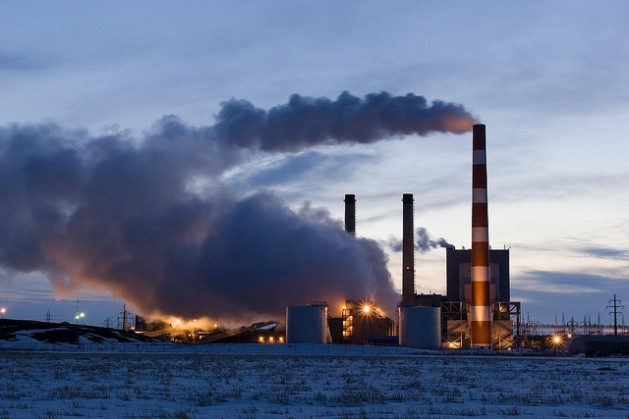COP26 Agreed Rules on Trading Carbon Emissions – But They’re Fatally Flawed

Dec 20 (IPS) - One surprise from COP26 – the latest UN climate change conference in Glasgow – was an agreement between world leaders on a new set of rules for regulating carbon markets. This would allow countries to trade the right to emit greenhouse gases.
Carbon trading is part of how countries intend to meet their obligations for reducing emissions under the Paris Agreement. Unfortunately, the manner in which countries agreed these rules may hobble the Agreement in its goal of averting catastrophic warming.
Carbon markets were central to the design of the Paris Agreement’s predecessor, the 1997 Kyoto Protocol, which created three different mechanisms for trading carbon. Developing countries had become accustomed to attracting investment via one called the “Clean Development Mechanism” (CDM) which allowed industrialised countries to invest in projects to reduce emissions in developing countries and count them against their own targets under the Kyoto Protocol. Many industrialised countries wanted to retain this sort of flexibility in how they met their own treaty obligations.
As a result, most governments were keen to keep carbon markets as part of the Paris Agreement. In Paris in 2015, the bare bones of mechanisms similar to those in the Kyoto Protocol were agreed, but without the details needed to put them into practice.
Why then did it take six years to agree the rules which would govern these markets? This was more than the four years it took countries to do the same in the Kyoto Protocol and, in effect, they were recreating the same mechanisms. The problems in reaching an agreement this time were three-fold, and they weren’t satisfactorily resolved in Glasgow.
Going backwards from Kyoto
Various states, and many environmental campaign groups, suspect that carbon markets weaken the overall effort to reduce emissions. As climate change has accelerated over the past decade these concerns have become more acute. Why trade emissions if everyone is trying to get them to zero? There is considerable evidence that carbon offset projects – such as wind farms, which emissions trading can fund – have failed to deliver a reduction in overall emissions. A 2017 study led by the EU Commission found that 85% of projects funded by the CDM hadn’t reduced emissions.
There are also fundamental design issues in the Paris Agreement that make setting up carbon markets under it much more difficult. The Kyoto Protocol expressed the obligations of industrialised states to reduce their emissions as targets. These could be translated into a fixed number of emissions allowances that provided carbon markets with a clear set of accounting rules and indicators of market demand.
No such set of rules exists in the Paris Agreement. Instead, all states submit their nationally determined contributions (NDCs) – national plans for reducing emissions. They may or may not have an emissions target and they vary in how they account for emissions or which sources of emissions they include in their plans.
How can a market function if there is no clear way of measuring what is being traded? And how should a country trading with another adjust its own NDC to avoid double-counting, when the design of each country’s NDC varies so much?
And what should countries do with all the credits created in the Kyoto Protocol’s system? Should they just be rolled over to be used in the new markets? Should they be simply abandoned? Or is there some way of allowing them in but controlling their use? A lot of CDM credits in particular remain, and they could flood the new markets and undermine the integrity of the NDCs.
A cop out
In the first week of COP26, it looked like these issues would continue to dog the negotiations. India supported unrestricted use of CDM credits in the new mechanism while the Solomon Islands (representing the Least Developed Countries group) opposed using them at all. In week two, these issues were either fudged or hastily agreed. The carbon traders were happy, as were the managers of the COP26 process – the UN secretariat and the UK government. We can now see the cost of failing to grapple with these thorny issues.
The Glasgow decisions on both Article 6.2 and 6.4 of the Paris Agreement are extraordinarily unclear compared with the equivalent ones for the Kyoto Protocol. Specialists in this field are still decoding precisely what they mean in practical terms. It’s likely that states will be able to use this opacity to double-count and claim credit for the same emissions-reducing activities.
Countries are supposed to set new NDCs regularly. At the same time, countries will be negotiating individual emission trades. The possibility for a country to game its NDC – making it appear more ambitious than it really is by counting already agreed trades within them – is impossible to avoid. It’s hard to see how this doesn’t fundamentally weaken the ambition of countries when updating their NDCs.
Monitoring how these mechanisms work in practice and whether they have the desired effect will be important over the coming years. While heralded at the time as a breakthrough in implementing significant tracts of the Paris Agreement, the Glasgow pact on carbon markets might instead be remembered as its undoing.
![]()
Matthew Paterson, Professor of International Politics, University of Manchester
This article is republished from The Conversation under a Creative Commons license. Read the original article.
© Inter Press Service (2021) — All Rights Reserved. Original source: Inter Press Service
 Global Issues
Global Issues